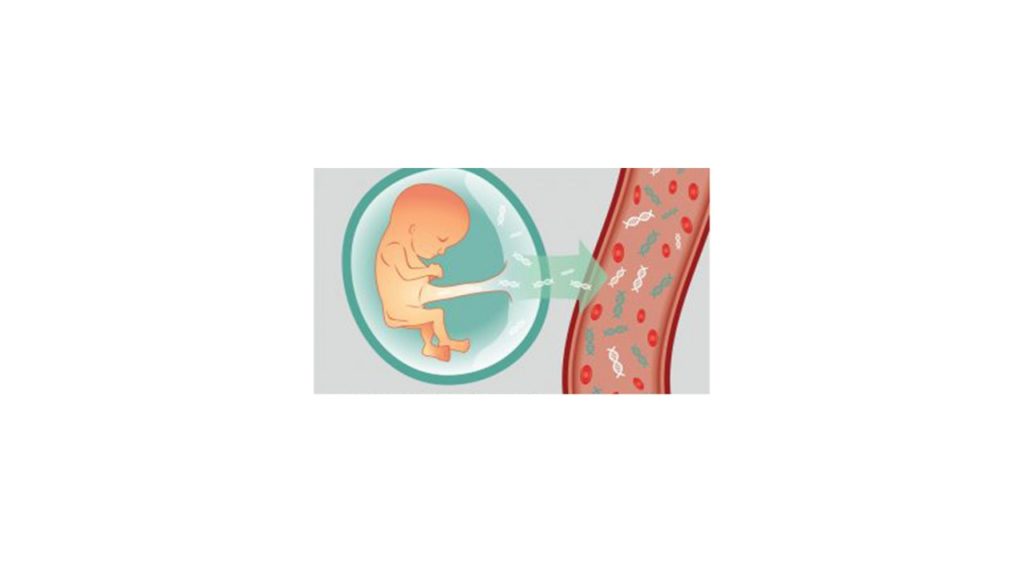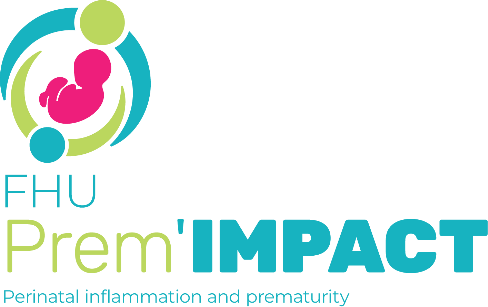
Coordinating investigator : Dr Juliette NECTOUX
Service de Médecine Génomique des Maladies de Système et d’Organe, Hôpital Cochin, Paris.
Scientific Director : Pr Thierry BIENVENU
Service de Médecine Génomique des Maladies de Système et d’Organe, Hôpital Cochin, Paris.
Clinical supervisor : Pr Vassilis TSATSARIS
Service de Gynécologie Obstétrique Hôpital Cochin – Maternité Port-Royal, Paris.
Sponsor : AP-HP
Funding sources : French Ministry of Health, PHRC N 2021
Evaluation of the diagnostic performance of Non Invasive Prenatal Diagnosis for single gene disorders
Scientific justification
| Cell-free fetal DNA (cffDNA) is present in the maternal blood from the early first trimester of gestation and makes up 5%–20% of the total circulating cell-free DNA (cfDNA) in maternal plasma. Its presence in maternal plasma has allowed development of noninvasive prenatal diagnosis for single-gene disorders (SGD-NIPD). This can be performed from 9 weeks of amenorrhea and offers an early, safe and accurate definitive diagnosis without the miscarriage risk associated with invasive procedures. One of the major difficulties is distinguishing fetal genotype in the high background of maternal cfDNA, which leads to several technical and analytical challenges. Besides, unlike noninvasive prenatal testing for aneuploidy, NIPD for monogenic diseases represent a smaller market opportunity, and many cases must be provided on a bespoke, patient- or disease-specific basis. As a result, implementation of SGD-NIPD remained sparse, with most testing being delivered in a research setting (Scotchman et al, Clin Chem, 2020). Thanks to several academic and associative financial supports, our academic network strongly promoted SGD-NIPD through to its expertise in terms of diagnosis of genetic disorders as well as of prenatal diagnosis, which allowed us to be one of the two European countries (after the UK) to develop and propose SGD-NIPD service as part of the nationwide standard care for mutation exclusion for couples at risk of transmitting any paternally inherited / de novo severe monogenic disorder (Orhant et al, Prenat Diag, 2016; Gruber et al, Clin Chem Lab Med, 2018; Pacault et al, BJOG, 2022). to enable the development of SGD-NIPD even for couples at risk of transmitting maternally inherited disorders, more challenging because of the high background of maternal DNA in cell-free DNA. This latest approach, derived from Relative Haplotype Dosage (RHDO) analysis proposed by Lo and colleagues (Lo et al, Sci Transl Med, 2010), allowed principal investigator’s team to conduct a preliminary fruitful work involving more than 98 at risk families for 5 disorders. The present project aims to take advantage of the unique French collaborative network to make SGD-NIPD possible for theoretically any monogenic disorder and any family. |
Main objective and primary endpoint
Main Objective : Evaluation of the diagnostic performance of SGD-NIPD.
Primary endpoint: we will compare the results obtained by of our innovative SGD-NIPD workflow versus the results obtained by diagnosis carried out as part of routine care (invasive prenatal diagnosis or genotype of the newborn at birth for MODY-GCK).
Diagnostic performances will be evaluated in terms of :
- % of affected/unaffected fetuses that were correctly classified as affected/unaffected, respectively;
- and % inconclusive results.
Secondary objectives
- The optimization of disease-specific SGD-NIPD workflows (different MPS capture panels providers) will be evaluated in terms of ;
- cffDNA concentration in maternal plasma;
- o sequencing coverage;
- o quality scores (block and concordance scores, sensitivity, specificity, % inconclusive results).
- Evaluation of the diagnostic performance according to the sampling term;
- The easiness of handling and turnaround time for each different pipelines will be qualitatively reported by lab technicians.
Population of study participants :
Pregnant women undergoing genetic counselling in a context of family history of SGD either through prenatal diagnosis by invasive sampling or through postnatal diagnosis by sampling of the newborn (for MODY-GCK).
Inclusion criteria :
- pregnant woman with 9 weeks of amenorrhea or more
- singleton pregnancy
- undergoing invasive PND in a context of family history of SGD involving the following genes : HBB, CFTR, FMR1, SMN1, DMPK, DMD, NF1, HTT, F8, F9, L1CAM, PKHD1, ATP7A or undergoing prenatal counselling in a context of maternal history of diabetes MODY-GCK
- germinal pathogenic paternal and/or maternal mutations previously identified
- age 18 years old or over
- signing an informed consent
Exclusion criteria
- at risk of another SGD at risk of SGD involving a de novo pathogenic mutation in a previous child
- woman under legal protection
Practical implementation :
Recruiting centers :
- Patient information and inclusion, consent form checking, e-CRF filling, pseudoanonymizated maternal blood sampling (40 ml for the research) and transfer to the co-investigator laboratory will be supervised by the clinical doctor (of CPDPN, or of genetic department, or of gynaecology department, or of diabetology department), during the visit planed in the context of the national standard care for pregnant women at risk to transmit SGD.
- Patient information and inclusion and consent form checking may also be supervised by the qualified person of CPDPN or of genetic department or of gynaecology department.
Co-investigators laboratories:
- On arrival at the lab, the lab techs and biologists involved in this study will be responsible for registration and centrifugation of samples, temporary storage of maternal plasma at -80°C before cfDNA extraction, DNA capture and NGS sequencing, and transfer sequencing data (Fastq) to bioinformatics centre (MOABI).
- In parallel of the study, they also perform the classic invasive prenatal testing and return the result to the clinical doctor of the recruiting center.
- Biologists analyze processed data and interpret the SGD-NIPD results specifically in the context of this study (no return to clinical doctor or patient).
Bioinformatics investigator platform (MOABI) :
- Data processing with in-house RHDO workflow analysis and transfer of processed data from MOABI to the corresponding co-investigator lab.
Number of participants included
~ 550 patients schedulded, including 20 MODY-GCK
Duration of the study :
Recruitment capacities are assessed by considering the prevalence of rare diseases and the activities of each co-investigator center as reported annually in the report of the biomedicine agency,
- Inclusion period: 24 months
- Patient observation period: 8 months maximum
- Total duration of the study: 32 months
Statistical analysis
The main objective of our study is to evaluate the diagnostic performance of our SGD-NIPD workflow as compared to classical PND after invasive sampling or to the newborn’s genotype at birth. We hypothesize that the positive and negative predictive values of our diagnostic test will be about 100%.
We also hypothesize that our new technique will obtain an inconclusive diagnostic rate about 10%. If we consider a sample size of 550 patients (including 20 MODY-GCK), we will be able to detect an inconclusive diagnostic rate with a width ±2.5% (IC95% [7.5% – 12.5%]).
Progress of the study
As of 14 may 2025, there were 23 open centres/59 centres and 37 patients included.
